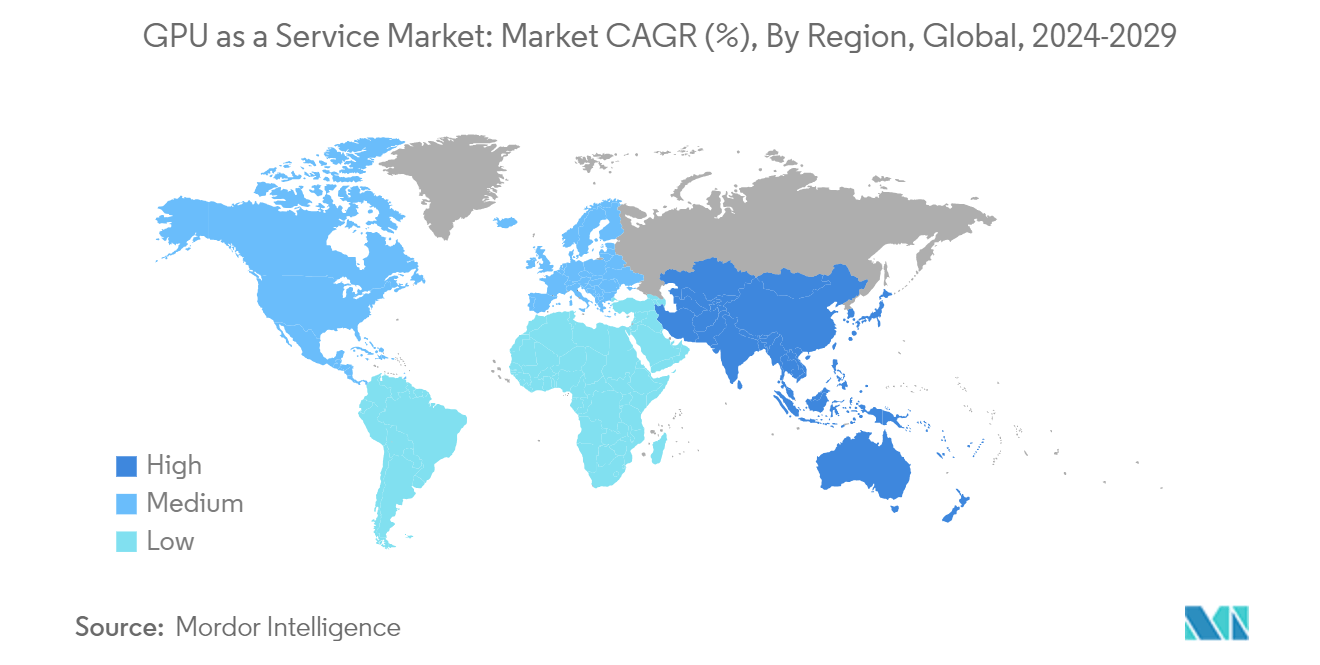Market Trends of GPU As A Service Industry
Automotive is Expected to Witness Remarkable Growth During Forecast Period
- GPUs solidify the graphics on the entertainment systems and dashboard instruments, allowing a smooth and reactive user interface. GPUs also support high-end vehicles with features like real-time ray tracing for a better immersive experience and deep learning super sampling to upscale images for sharp visuals without preceding performance.
- As ADAS and AVs increasingly rely on analyzing real-time sensor data (camera data, lidar data, radar data, etc.), GPUs are well-suited to handle the workload distributed across their cores, speeding up tasks such as object detection or scene understanding. Modern GPUs do not focus on graphics rendering. They can also run custom algorithms through frameworks like CUDA, which allow developers to leverage the GPU’s power for specific automotive functions, such as AI and accelerated computing, fueling the transformation of the entire auto industry.
- The rising popularity of self-driving or autonomous vehicles is a primary growth factor for the demand for GPUs. Many new automobile models have various infotainment system options to aid the driver. Currently, parking cameras are required, particularly for larger vehicles with several dead angles, such as most SUVs. A camera on the front, back, or sides can help the driver avoid colliding with other vehicles, scraping sidewalks, etc. Consequently, a GPU is required to process all these cameras/sensors and render the image.
- In addition, automotive in-vehicle infotainment (IVI) systems have increasingly become more advanced. Premium models can have up to 12 displays with 4K resolution and features like gesture, voice, and facial recognition. Support for technologies, including Android Auto or Apple CarPlay, and larger screen sizes are the important elements of the consumer’s wish lists while buying a new car. Automotive manufacturers have started using considerably more complex sensors and cameras to detect items in the surrounding area to improve this capability. The latest innovation is parking assistance with a bird's eye perspective. As a result, the GPU will analyze the sensors and render the complete area around the vehicle in real-time, allowing drivers to have a better awareness of their surroundings.
- Also, the automotive industry has experienced tremendous expansion during the previous decade. The development of affordable, efficient, and powerful electric cars was a major turning point for the industry. Significant innovations are analyzed to roll out as a result of autonomous driving. With significant research and computing power, autonomous vehicle implementation is analyzed to be witnessed during the forecast period, and a strong GPU (and CPU) is required to power artificial intelligence in a Tesla, BMW, Porsche, or any other vehicle. GPUs are also an integral feature of every modern car.

North America Accounts for Significant Market Share
- North America is one of the major investors and innovators in the global GPU as a Service market owing to the increasing domestic adoption and expanding regional data center, gaming, and AI market among consumers. The increase in demand for advanced technologies, such as data center servers, machine-to-machine communication, and AI, is significant compared to other regions. Therefore, it is expected to bring huge growth opportunities for the GPU as a Service market.
- The region's automotive and transport industry is one of the most important in the world due to the size of the domestic market and the use of mass production techniques. Over the past decade, the region's auto industry has grown dramatically from manufacturing to distribution, changing consumer preferences and new technology, pushing the industry into a historical change.
- North America is home to various companies like Honda, Toyota, Ford, Chevrolet, and Tesla. It has been a pioneer in the automotive industry, especially in terms of automation, thus creating new opportunities for the vendors operating in the region. According to CAR (Center for Automotive Research), US motor vehicle production will reach 11.7 million units by 2025.
- The regional government has also developed a National AI Strategy, a policy framework that sets out a strategy for the United States to accelerate AI R&D and adoption. It also promotes investments to provide GPU as a Service and other computing resources, increase international collaboration, increase R&D funding, and ethically develop AI to reduce bias and protect privacy.
- Also, the adoption of cloud technology, increasing penetration of data centers, and increasing 5G technology further expand the market growth in the region. The increasing expansion of the region's data center and cloud market will also fuel the demand for GPU technology.


